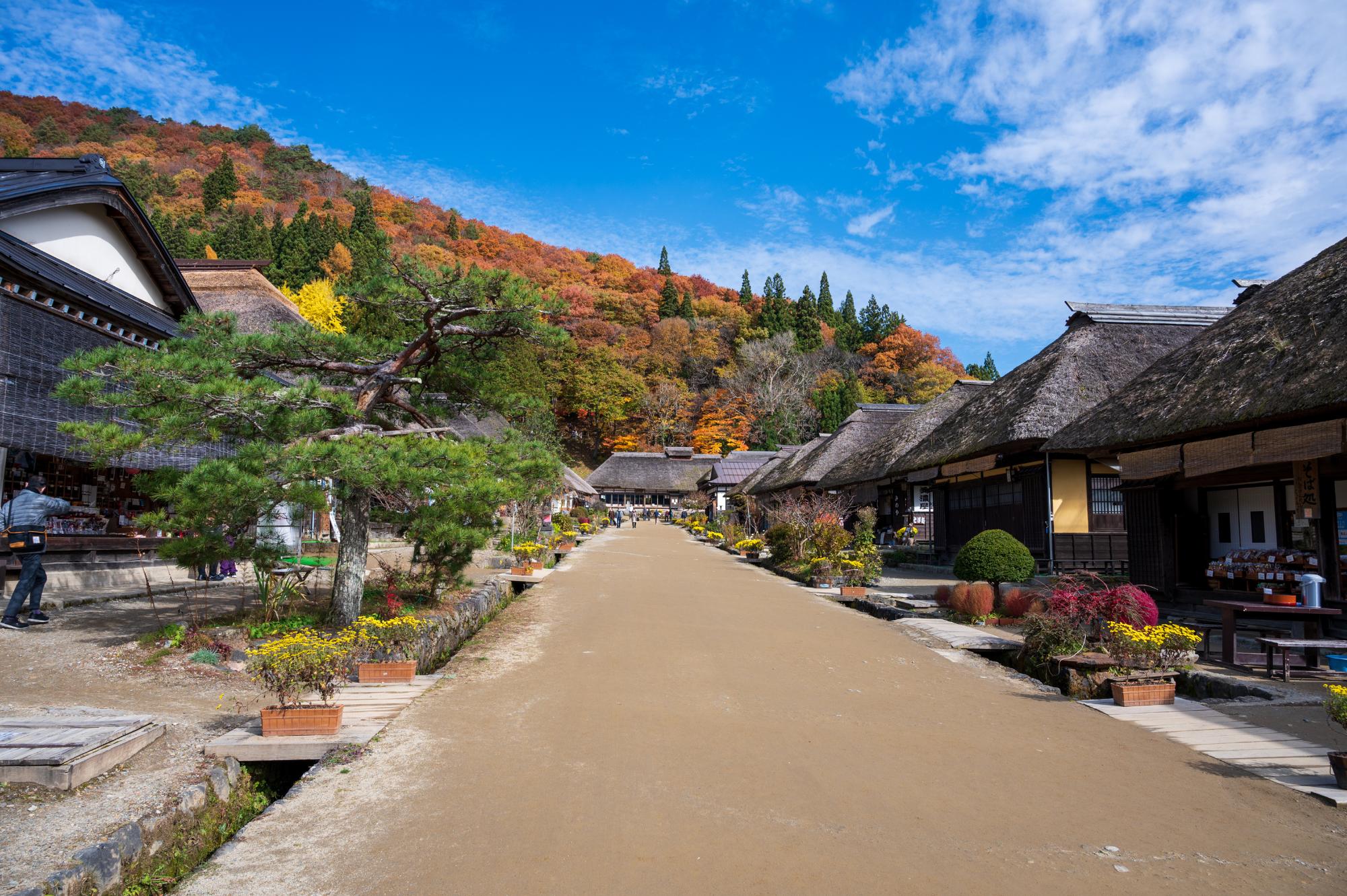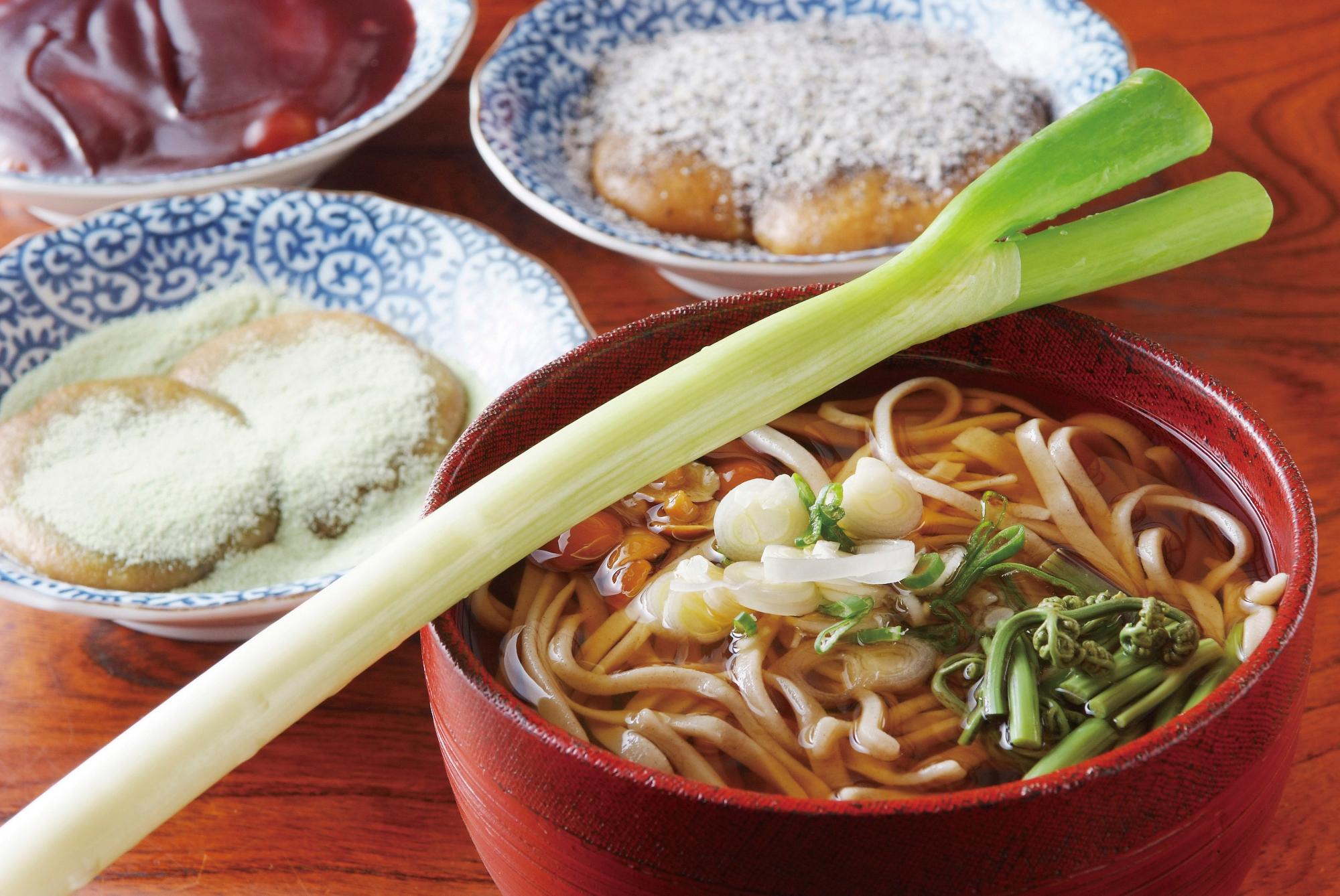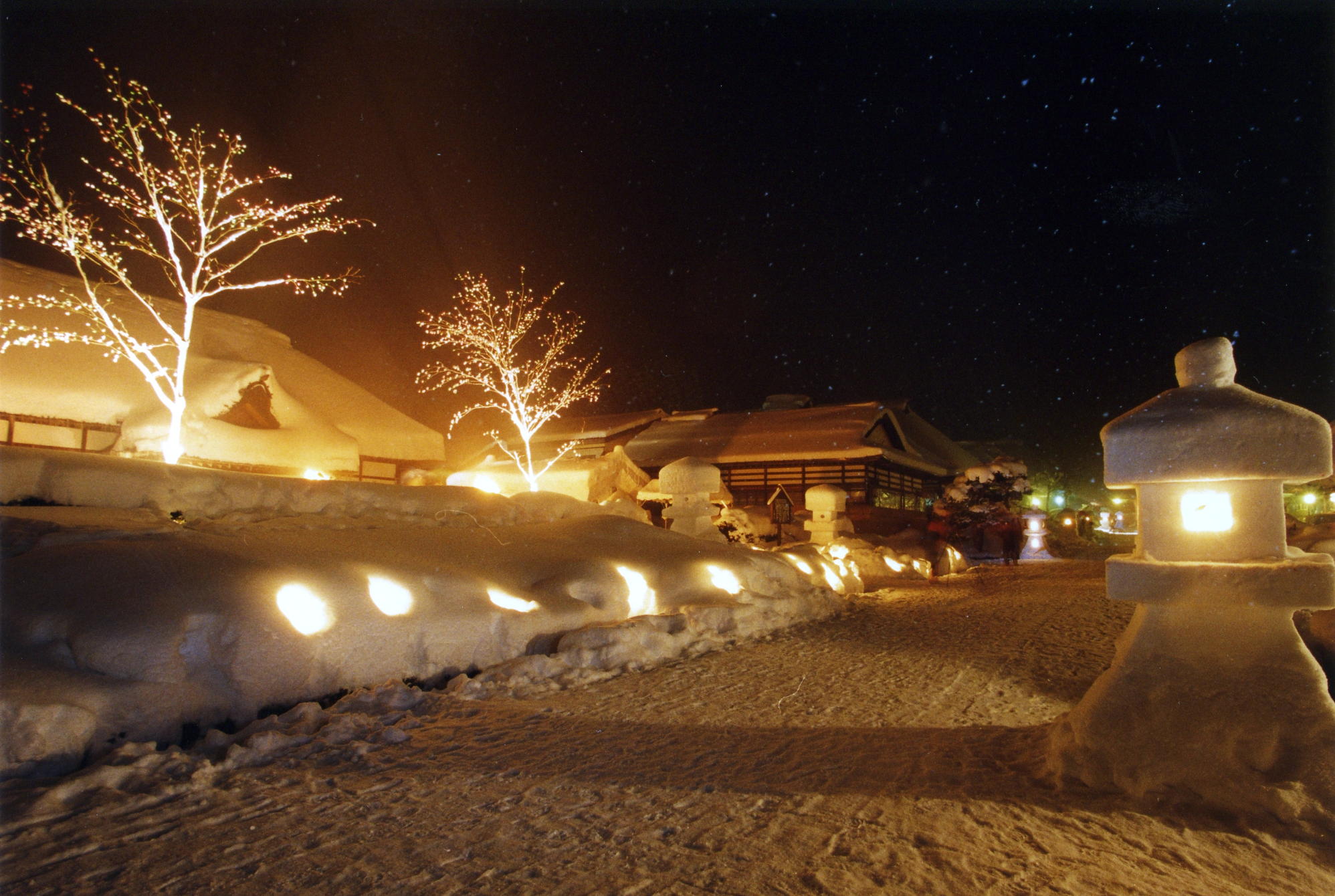Ouchi-juku

Ouchi-juku
The traditional thatched-roof houses and shops lining the main street of Ouchi-juku preserve the ambience of a post-station town (shukuba-machi) of the Edo period (1603–1867). The post towns provided food and accommodation for travelers, most of whom were getting around on foot. Many of the residents belong to families that have lived in Ouchi-juku for generations. They form a close-knit community and operate most of the shops, restaurants, and other facilities in the town. Ouchi-juku offers visitors ample opportunities to delve into the area’s culture and history as well as to try local cuisine or purchase souvenirs.

Preserving the Past
Ouchi-juku is thought to have been established around 1640, and prospered over time because of its location on a major route connecting the towns of Aizu-Wakamatsu (Fukushima Prefecture) and Nikko (Tochigi Prefecture). In the Meiji era (1868–1912), construction of new roads and railways resulted in the gradual decline of post towns, but infrastructure development came relatively late to the region and largely bypassed Ouchi-juku. The area was designated an Important Preservation District for Groups of Traditional Buildings by the government in 1981.


Community Cooperation
People in agricultural communities in Japan have a long tradition of working together for mutual benefit, a practice that helps maintain the social infrastructure of the community. Neighbors formed yui associations. The yui association still functions in Ouchi-juku. When the thatched roofs of any of the buildings in the community needs to be replaced or repaired, all of the members of the yui join in the repair work which is why all the houses have been able to maintain their thatch roofs for 400 years. The thatch (kaya) includes a number of different grasses, and it helps to keep the houses cool in summer and warm in winter. Since fire is an ever-present concern, the town has its own volunteer fire brigade. Regular testing of the equipment outside each residence is celebrated in the annual “fire prevention ceremony” on September 1. This fire drill activity has become a popular event with visitors in its own right.

Local Dishes
Many of the residences along the main street of Ouchi-juku include a shop or restaurant. Several of the shops serve soba (buckwheat noodles), and visitors can try the local stunt of trying to eat them with sticks of raw long onion (negi) in place of chopsticks. The town has an elegant café featuring early Western-style architecture, as well as a variety of street foods that are ideal for a casual meal or light snack. A signature dish of the Shimogo region is shingoro, which are rice balls coated with seasoned miso and grilled over charcoal. Visitors looking for gifts or souvenirs will find a variety of traditional crafts, such as pottery and fabrics, along with small toys and novelties.


Local Landmarks
Ouchi-juku today is primarily portrayed as an old post-station town, but many residents in the past supported themselves through farming and forestry. You can learn more about the history of the area and see artifacts from daily life in the past at the Ouchi-juku Pavilion, which serves as the town museum. The building was the town’s honjin—the inn reserved for the use of daimyo lords and other high-ranking people who passed through Ouchi-juku during the Edo period. Along with a traditional thatched roof, the honjin features a large sunken hearth (irori). A kettle or pot for cooking could be suspended on a hook over the fire laid in the square stone-lined pit set into the floor.
For a panorama of the town, visitors can walk up the small mountain to Shohoji Temple, which overlooks the town from the west. The temple enshrines an image of Amida Buddha, who is thought to have watched over the village for more than 300 years. Another pleasant walk from the main part of the town passes through a small forest of cedar trees in the west and leads to Takakura Shrine.
The town looks particularly romantic at night. Lanterns hung from the eaves of each house are lit, and the town looks much as it did a century or more ago.

Celebrating the Seasons
There are a number of events and festivals which take place throughout the year.
Takakura Shrine celebrates its Midsummer Festival annually on July 2 to honor Prince Mochihito (1151–1180), a son of Emperor Go-Shirakawa (1127–1192), who is enshrined there. Men from the village make a solemn procession around Ouchi-juku carrying a portable shine and praying for the safety of their households and for a good harvest.
In winter, residents and visitors enjoy the Snow Festival. This is held on the second weekend in February, when the town is often blanketed in deep snow. Residents sculpt lanterns by hand from snow and place them along the street before lighting each one in turn with a sacred flame. Fireworks light up the night sky complementing the beautiful contrast of the lanterns against pristine snow.



This English language text was created by the Japan Tourism Agency.
この英語解説文は観光庁の地域資源の多言語解説整備支援事業で作成しました。








更新日:2022年02月08日